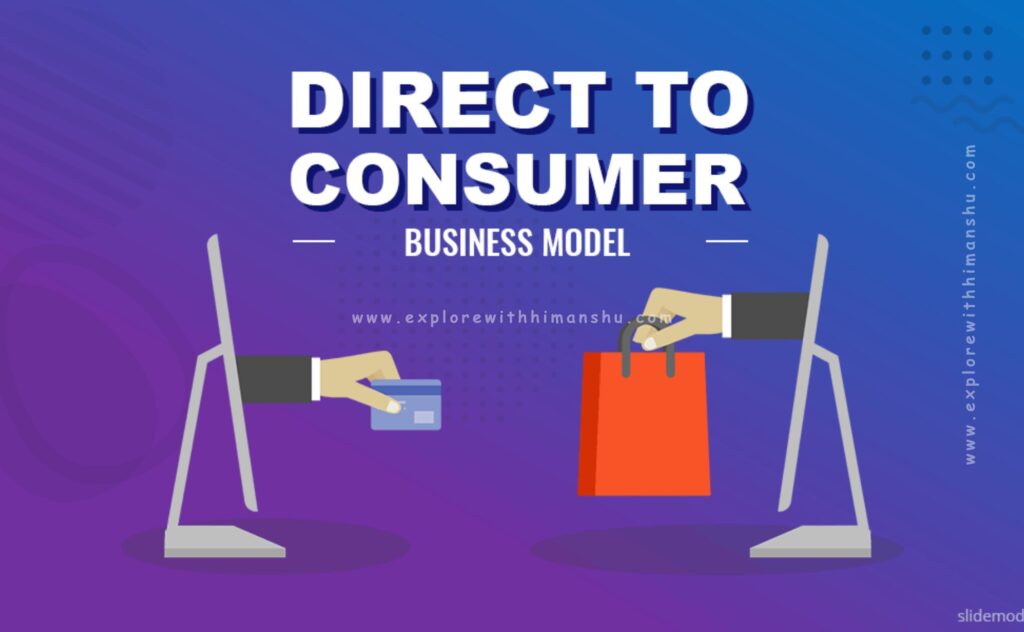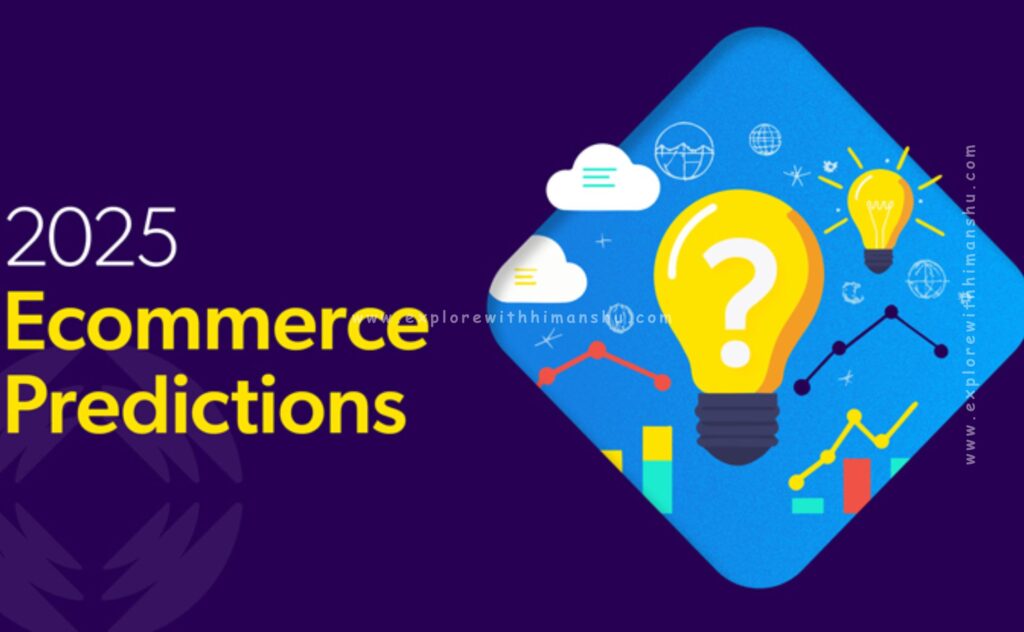Introduction
E-commerce has evolved rapidly over the past decade, and as we step into 2025, the industry is set to experience groundbreaking transformations. With technological advancements, changing consumer behavior, and new business models, online shopping is no longer just about convenience—it’s about personalization, sustainability, and immersive experiences.
Discover the future of e-commerce in 2025! Explore emerging trends, AI-driven shopping experiences, sustainable practices, and the latest innovations shaping online retail. Stay ahead with expert insights and case studies.
The e-commerce industry is expected to grow significantly, with more businesses adopting AI-driven solutions, blockchain for secure transactions, AR/VR for enhanced shopping experiences, and new payment methods such as cryptocurrencies and BNPL (Buy Now, Pay Later). In this blog, we will explore the major trends shaping the future of e-commerce, predictions for 2025, case studies, and statistical insights to help businesses stay ahead in the game.

1. The Growth of E-commerce in 2025
1.1 Market Size & Global Expansion
The global e-commerce market is projected to reach $7.4 trillion by 2025, with emerging markets such as India, Southeast Asia, and Africa playing a crucial role in driving this growth. The widespread adoption of smartphones and improved internet connectivity has made online shopping accessible to billions worldwide.
1.2 Key Drivers of E-commerce Growth
- Rise of Mobile Commerce (M-commerce): Over 75% of e-commerce sales are expected to come from mobile devices.
- Social Commerce Boom: Platforms like Instagram, TikTok, and Facebook are integrating shopping features directly within their apps.
- Sustainable & Ethical Shopping: Consumers are prioritizing eco-friendly brands, pushing businesses to adopt greener practices.
- Fast & Flexible Delivery Options: Same-day and instant deliveries are becoming standard expectations for consumers.
2. Emerging E-commerce Trends in 2025
2.1 AI & Machine Learning for Personalization
Artificial Intelligence (AI) is revolutionizing how e-commerce businesses interact with customers. AI-driven tools analyze customer behavior, preferences, and purchase history to offer highly personalized shopping experiences.
2.2 Augmented Reality (AR) & Virtual Reality (VR) Shopping
| Feature | Impact on E-commerce |
|---|---|
| Virtual Try-Ons | Customers can try clothes, makeup, or accessories before purchasing |
| 3D Product Views | Enhances customer confidence in online purchases |
| Interactive Stores | Brands offer virtual store experiences via VR |
The Power of Faceless YouTube Videos: How to Build a Profitable Channel Without Showing Face In 2025
Companies like IKEA and Sephora are already leveraging AR technology, and by 2025, it will become a mainstream tool for online retailers.
2.3 Voice Commerce & Smart Assistants
Voice shopping via Alexa, Google Assistant, and Siri is gaining traction. With improvements in AI-powered voice search, customers can now search, compare, and purchase products hands-free.
2.4 Blockchain for Secure Transactions
Blockchain technology ensures secure and transparent transactions, reducing fraud and increasing consumer trust. It also facilitates faster cross-border transactions, making international e-commerce more efficient.
2.5 BNPL & Cryptocurrency Payments
The rise of Buy Now, Pay Later (BNPL) services like Klarna and Afterpay has changed how consumers pay for online purchases. Additionally, major retailers are beginning to accept cryptocurrencies like Bitcoin and Ethereum as a payment method.

3. The Rise of Direct-to-Consumer (DTC) BrandsCase Study: Nike’s DTC Success
Nike has significantly reduced its reliance on third-party retailers by focusing on its direct-to-consumer strategy. By leveraging AI-driven marketing, exclusive app-based offers, and a robust online presence, Nike has boosted its online sales by over 35% in recent years.
Key Takeaways for E-commerce Brands
- Building brand loyalty through personalized engagement
- Investing in high-quality content and storytelling
- Using customer data to refine products and marketing strategies
4. Future of Logistics & Delivery
4.1 Drone & Autonomous Deliveries
Retail giants like Amazon and Walmart are heavily investing in drone delivery technology to reduce shipping times and costs. By 2025, we could see fully functional autonomous delivery systems in major cities worldwide.
4.2 Hyperlocal Warehousing
Businesses are setting up micro-fulfillment centers to facilitate same-day deliveries. This trend is particularly beneficial for grocery and essential goods e-commerce platforms.
5. E-commerce & Sustainability
| Sustainability Initiative | Impact |
|---|---|
| Carbon-neutral shipping | Reduces environmental impact |
| Eco-friendly packaging | Reduces plastic waste |
| Circular economy models | Encourages resale and recycling |
Brands like Patagonia and Allbirds are leading the way in eco-friendly e-commerce by adopting sustainable sourcing and ethical manufacturing practices.
6. The Role of Social Commerce in E-commerce Growth
Platforms like Instagram Shopping, TikTok Shop, and Facebook Marketplace have transformed the way consumers discover and purchase products. Influencer marketing plays a huge role in boosting sales and creating authentic connections with customers.
Case Study: TikTok’s Impact on E-commerce
Products that go viral on TikTok often sell out within days, proving the power of short-form video content in driving impulse purchases.
How Brands Can Leverage Social Commerce
- Collaborate with influencers for product endorsements.
- Use short-form video content for product demonstrations.
- Integrate shoppable posts and live-stream shopping events.

7. Predictions for E-commerce in 2025
| Prediction | Expected Outcome |
|---|---|
| 6G networks | Faster, seamless mobile shopping |
| AI-powered virtual shopping assistants | More personalized shopping experiences |
| Expansion of Metaverse shopping | Virtual malls and digital product experiences |
| Growth of subscription-based commerce | More brands offering exclusive memberships |
Conclusion
The e-commerce industry is set for an exciting transformation in 2025, driven by technological advancements, changing consumer preferences, and sustainable initiatives. Businesses that adapt to these trends and leverage AI, AR/VR, blockchain, and social commerce will stay ahead in the competitive landscape.
The future of e-commerce is incredibly promising and filled with opportunities for businesses that embrace innovation, personalization, and technology-driven solutions. As we enter 2025, it’s evident that consumer expectations are evolving, demanding faster, safer, and more engaging shopping experiences. Companies that invest in AI, AR/VR, blockchain, and sustainable practices will have a competitive edge in the industry.
One of the biggest takeaways for businesses is the importance of adaptability. The digital landscape is continuously changing, and those who remain flexible and open to new advancements will thrive. Social commerce, voice search, and hyper-personalized shopping experiences are just the beginning of what’s to come.
Moreover, sustainability in e-commerce is no longer optional—it’s a necessity. Brands that prioritize eco-friendly practices, such as carbon-neutral shipping, ethical sourcing, and circular economy models, will attract environmentally conscious consumers and build long-term brand loyalty.
As we move forward, the focus will be on enhancing customer experiences, reducing environmental impact, and making online shopping more interactive and efficient. Brands that embrace innovation and prioritize customer satisfaction will lead the future of e-commerce.
What do you think about these trends? Share your thoughts in the comments below!


